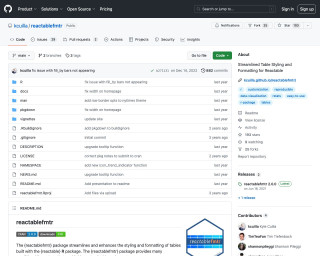Resources
This carefully curated collection of resources will help you find packages and learning resources to help you on your R journey.
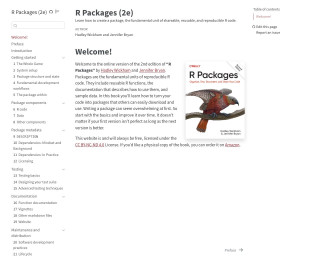
R Packages
Learn how to create a package, the fundamental unit of shareable, reusable, and reproducible R code.
Go to Resource
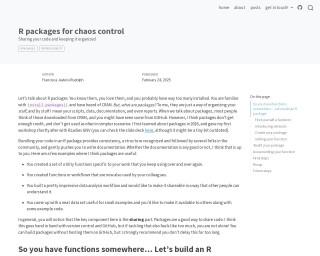
R packages for chaos control
This content covers R packages and their often underappreciated role in organizing scripts, data, documentation, and reports. R packages are discussed beyond their common association with CRAN, including their usefulness in simpler scenarios. The piece highlights the importance of R packages for consistency, structure, and promoting documentation. Practical applications of R packages, such as creating utility functions and sharing code, are emphasized, especially for collaboration. Version control and GitHub are mentioned as complementary tools. Building an R package is encouraged, with references to resources and a minimal guide to get started, suggesting a less intimidating approach for newcomers.
Go to Resource

R Primers
R Primers offer updated RStudio/Posit educational content, now utilizing Quarto and webR. Originally developed by RStudio/Posit Education Team, these open-source tutorials help users learn R programming, deriving content from the book 'R for Data Science'. They are licensed under the CC BY-SA 4.0, ensuring wide accessibility for learners to improve their data science skills with R.
Go to Resource
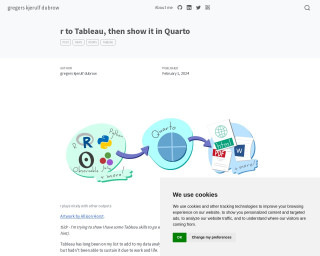
R to Tableau, then show it in Quarto
This content outlines Gregers Kjerulf Dubrow's journey to integrating R with Tableau and showcasing the synergy through a Quarto blog post. Dubrow seeks to enhance his employment prospects by demonstrating his proficiency in Tableau alongside his R skills. Utilizing the free version of Tableau Public and without previous knowledge of data connection and cleaning in Tableau, he adopts a workflow that features using r for sourcing and cleaning the data, followed by visualization in Tableau, and finally embedding the Tableau visualization in a Quarto blog post. This practical application involves a data analysis project of the English Premier League's 2022-23 season with the worldfootballr package, including the creation of a parametrized user-choice analysis dashboard.
Go to Resource
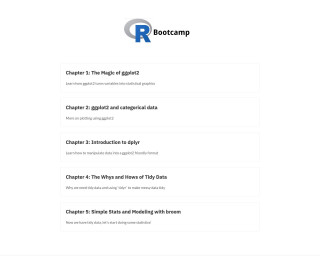
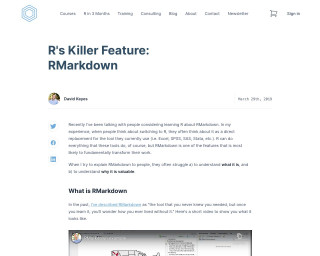
R’s Killer Feature: RMarkdown
RMarkdown is a powerful tool in R that allows users to write documents with embedded code and generate reports, presentations, and other outputs. This article discusses the value and benefits of using RMarkdown, such as avoiding switching between multiple tools, focusing on content rather than formatting, ensuring consistent branding, embracing reproducibility, producing many reports from one document, and using version control.
Go to Resource

Rapid RAG Prototyping
Rapid RAG Prototyping leverages the power of R through the ellmer package and DuckDB to build a Retrieval-Augmented Generation (RAG) prototype, enhancing a large language model with domain-specific knowledge. This solution addresses the limitations of large language models, which often lack current or specific information. The ellmer package provides an interface for working with various LLM providers, adding functions like tool calling and data extraction. DuckDB contributes with high-performance data processing, enabling efficient query handling. Together, they offer a formidable toolkit for fast prototyping of LLM-powered applications.
Go to Resource
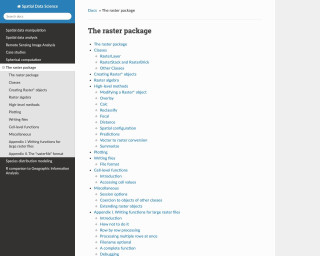
raster
The raster package is an R package for spatial data manipulation and analysis. It provides classes and functions for creating, manipulating, and analyzing raster data. The package includes high-level methods for raster algebra, overlay operations, distance calculations, and more. It also supports writing and reading raster files in various formats. The raster package is commonly used for remote sensing image analysis, species distribution modeling, and other spatial data science tasks.
Go to Resource
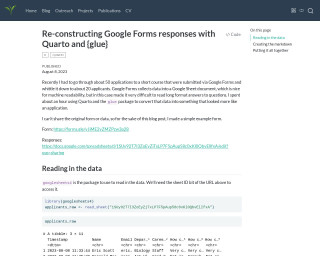
Re-constructing Google Forms responses with Quarto and {glue}
This blog post by Eric R. Scott explains how to use Quarto and the {glue} R package to transform Google Forms responses into a more readable application format. Initially dealing with a Google Sheet that collated 50 applicants' data for a short course, Scott outlines the process of converting cumbersome, lengthy answers into clean, application-like documents. The use of the {googlesheets4} package to import data and the manipulation of column names with {janitor} and {stringr} are detailed. Key to the transformation is utilizing Quarto's 'asis' output chunk option alongside {glue} to programmatically create markdown from the dataset.
Go to Resource
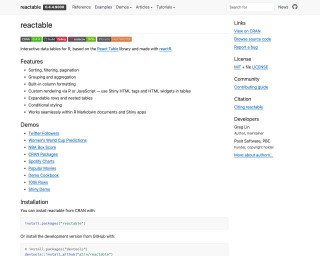
reactable
Interactive data tables for R, based on the React Table library and made with reactR.
Go to Resource
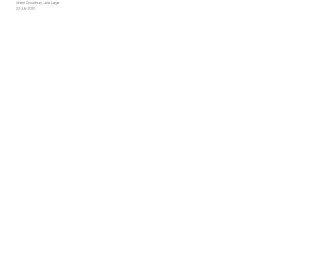
Reactable Tutorial
This tutorial provides a guide on using the reactable package in R to create interactive data tables. It covers topics such as setting up the package, modifying column properties, adjusting width and alignment, rendering cell values as HTML, and grouping and aggregation.
Go to Resource
